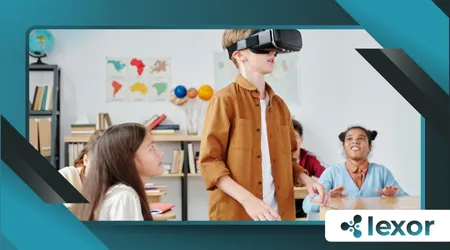Virtual Learning Tools: Supporting Remote Education

The rise of virtual learning tools has revolutionized how education is delivered, especially in the context of remote learning.
As classrooms transitioned from physical spaces to digital platforms, these tools have become indispensable for educators and students alike.
But what makes them so effective, and how are they shaping the future of education?
Let’s explore the transformative role of virtual learning tools in supporting remote education, their benefits, challenges, and the innovative ways they are being used today.
The Evolution of Remote Education
Remote education is not a new concept, but its adoption skyrocketed during the COVID-19 pandemic.
According to a report by UNESCO, over 1.6 billion students worldwide were affected by school closures, forcing institutions to pivot to online learning almost overnight.
This sudden shift highlighted the critical need for virtual learning tools that could replicate the classroom experience while offering flexibility and accessibility.
Educational institutions had to quickly adapt their curricula to suit an online format, leading to significant changes in teaching methods.
Teachers had to become proficient in new technologies, often with little training or preparation.
From video conferencing platforms like Zoom to interactive learning management systems (LMS) such as Canvas and Moodle, these tools have become the backbone of modern education.
But their impact goes beyond mere convenience—they are redefining how knowledge is shared and absorbed.
Students can now collaborate in real-time, participate in discussions, and access a wealth of resources from anywhere in the world.
This shift has also prompted a reevaluation of traditional assessment methods, leading to more innovative and flexible evaluation strategies.
+ Educational Robotics: Best Starter Kits for Kids
The Benefits of Virtual Learning Tools
One of the most significant advantages of virtual learning tools is their ability to personalize education.
Adaptive learning technologies, for instance, use algorithms to tailor content to individual students’ needs, ensuring that no one is left behind.
This level of customization is nearly impossible to achieve in a traditional classroom setting.
By analyzing student performance data, these tools can identify strengths and weaknesses, allowing for targeted interventions.
This personalized approach not only boosts confidence but also fosters a deeper understanding of the material.
Moreover, these tools break down geographical barriers.
A student in a rural area can now access the same resources as someone in a bustling city.
Platforms like Khan Academy and Coursera offer free or affordable courses, democratizing education and making it more inclusive.
This accessibility means that learners from diverse backgrounds can gain knowledge and skills that were previously out of reach.
Consequently, this contributes to a more equitable educational landscape, benefiting society as a whole.
Another benefit is the flexibility they provide.
Asynchronous learning options allow students to engage with material at their own pace, accommodating different learning styles and schedules.
This is particularly beneficial for adult learners balancing work and education.
The ability to revisit lectures and resources on-demand enhances retention and understanding.
Additionally, this flexibility encourages lifelong learning, as individuals can pursue education alongside their professional responsibilities.
Challenges and How to Overcome Them
Despite their many advantages, virtual learning tools are not without challenges.
One major issue is the digital divide.
Not all students have access to reliable internet or devices, creating disparities in learning opportunities.
Governments and organizations must work together to bridge this gap by investing in infrastructure and providing affordable technology.
Community programs that offer device loans or internet access can play a crucial role in mitigating this issue.
Another challenge is maintaining student engagement.
Without the physical presence of a teacher, some students may struggle to stay motivated.
To address this, educators are leveraging gamification and interactive content to make learning more engaging.
Tools like Kahoot! and Quizlet turn lessons into games, fostering a sense of competition and fun.
Incorporating multimedia elements, such as videos and interactive simulations, can also help capture students’ attention.
Finally, there’s the issue of screen fatigue.
Prolonged exposure to screens can lead to burnout, both for students and teachers.
Incorporating offline activities and encouraging regular breaks can help mitigate this problem.
Educators can design hybrid models that combine online and offline learning experiences, promoting a more balanced approach.
Furthermore, mindfulness practices and time management strategies can be introduced to help students manage their screen time effectively.

Innovative Uses of Virtual Learning Tools
The versatility of virtual learning tools has led to some truly innovative applications.
Virtual reality (VR) and augmented reality (AR), for example, are transforming how complex subjects are taught.
Imagine a biology student exploring the human body in 3D or a history class taking a virtual tour of ancient Rome.
These immersive experiences make learning more engaging and memorable.
Such technologies not only enhance comprehension but also encourage curiosity and exploration in students.
Artificial intelligence (AI) is another game-changer.
AI-powered chatbots can answer students’ questions in real-time, while machine learning algorithms analyze performance data to identify areas for improvement.
This not only enhances the learning experience but also reduces the workload for educators.
By automating administrative tasks, teachers can focus more on instructional time and student interactions.
Moreover, AI can provide personalized feedback, helping students understand their progress and areas needing attention.
Collaboration tools like Google Workspace and Microsoft Teams are also playing a crucial role.
They enable students to work together on projects, share resources, and communicate seamlessly, fostering a sense of community even in a virtual environment.
These platforms facilitate real-time collaboration, allowing students to brainstorm and create together, regardless of their physical location.
Additionally, integrated tools for file sharing and project management streamline group work, making it more efficient and organized.
The Future of Virtual Learning Tools
As technology continues to evolve, so too will virtual learning tools.
The integration of AI, VR, and blockchain technology promises to make education even more personalized, secure, and immersive.
Blockchain, for instance, could be used to verify academic credentials, reducing fraud and streamlining the hiring process.
This technology can also enhance data security, ensuring that student information is protected against unauthorized access.
As these tools become more sophisticated, they will likely reshape the educational landscape in profound ways.
Moreover, the rise of the metaverse opens up exciting possibilities for education.
Imagine attending a virtual lecture in a 3D classroom or participating in a global symposium without leaving your home.
The boundaries between physical and virtual learning are blurring, creating a hybrid model that combines the best of both worlds.
In this new paradigm, students could engage in experiential learning, collaborating with peers from around the globe in real-time.
Such immersive environments can foster cultural exchange and enhance global awareness among learners.
++ Assistive Technology: Inclusion in Education
Data-Driven Insights: The Impact of Virtual Learning Tools
To better understand the impact of virtual learning tools, let’s look at some data.
A 2022 study by McKinsey & Company found that students who used adaptive learning technologies performed 30% better on standardized tests compared to those who relied solely on traditional methods.
This highlights the potential of these tools to enhance academic outcomes.
Data analytics can also provide insights into student behavior, helping educators refine their teaching strategies.
By tracking engagement levels, teachers can identify which methods resonate most with their students.

| Metric | Traditional Learning | Virtual Learning Tools |
|---|---|---|
| Student Engagement | Moderate | High |
| Accessibility | Limited | High |
| Personalization | Low | High |
| Cost-Effectiveness | Moderate | High |
Table 1: A comparison of traditional learning and virtual learning tools.
Another interesting trend is the growing adoption of microlearning.
This approach breaks down content into bite-sized chunks, making it easier for students to absorb and retain information.
Platforms like Duolingo and LinkedIn Learning are leading the way in this space.
Microlearning not only caters to shorter attention spans but also allows learners to engage with material in a more manageable format.
This method can be particularly effective for busy professionals seeking to upskill without committing to lengthy courses.
| Platform | Focus Area | Key Feature |
|---|---|---|
| Khan Academy | K-12 Education | Free, comprehensive courses |
| Coursera | Higher Education | Accredited certifications |
| Duolingo | Language Learning | Gamified lessons |
| LinkedIn Learning | Professional Development | Industry-relevant skills |
Table 2: Popular platforms leveraging virtual learning tools.
Conclusion: Embracing the Digital Transformation
The integration of virtual learning tools into education is not just a temporary fix—it’s a fundamental shift in how we approach learning.
These tools offer unparalleled opportunities for personalization, accessibility, and innovation, but they also come with challenges that must be addressed.
As we move forward, it’s essential to strike a balance between technology and human interaction.
While virtual learning tools can enhance education, they cannot replace the mentorship and emotional support that teachers provide.
By combining the best of both worlds, we can create a future where education is truly inclusive, engaging, and transformative.
The journey has just begun, and the possibilities are endless.
Whether you’re an educator, student, or lifelong learner, now is the time to embrace these tools and unlock your full potential.
After all, in the words of Nelson Mandela, “Education is the most powerful weapon which you can use to change the world.”
As we continue to innovate and adapt, the impact of these tools will only grow, shaping the next generation of learners and leaders.
